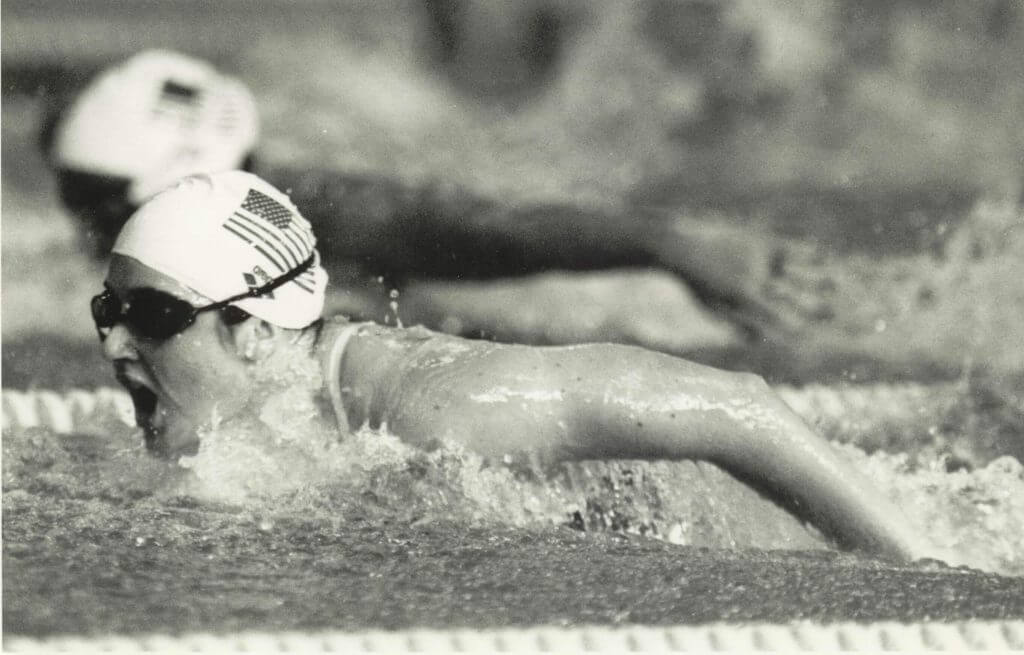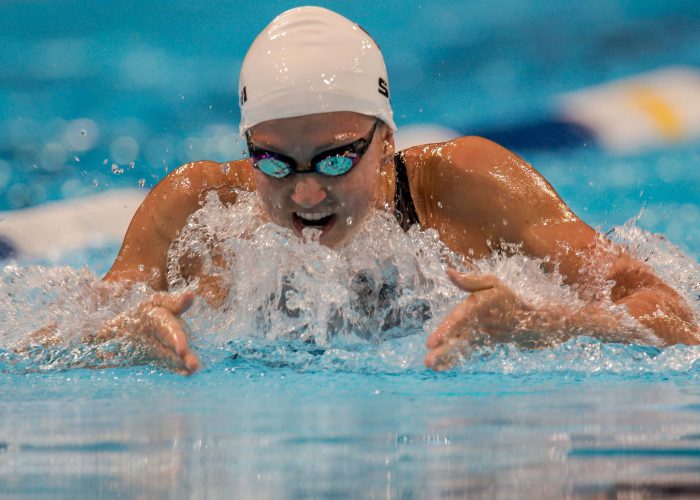Comparison of Women’s LCM World Records from 1980 to Today

By Jason Tillotson, Swimming World College Intern
Last week, my fellow Swimming World college intern, Jacob Riley pieced together a fantastic comparison of the men’s LCM world records in the 1980’s versus the world records that stand today. This sparked some interesting conversation about the where the sport has been, where it is and where it is headed.
My fellow intern was right; the sport of swimming has changed over the past several decades. From the over-distance training in the 80’s to the sprint and power craze that is making its way around the swimming world today, training fads have gone in and out. Even the style of suits played a role in the sport over the past 37 years. It wasn’t until the early 2000’s when technical suits became mainstream, then after that the super-suit era elevated the sport of swimming to an even higher level.
In the comments of Jacob Riley’s article, a Swimming World reader, by the name of Clare Lobb, asked for a comparison of the women’s world records.
I say, let’s give the people what they want.
Note: In the case where the world record was broken more than once in 1980, the fastest time from that year was used. There were also instances where the world record was not broken in the year 1980, for those instances, the year was marked beside the country code.
50 Free
1980: 25.96 Jill Sterkel (USA)
2017: 23.73 Britta Steffen (GER)
100 Free
1980: 54.79 Barbara Krause (GDR)
2017: 52.06 Cate Campbell (AUS)
200 Free
1980: 1:58.23 Sippy Woodhead (USA – 1979)
2017: 1:52.98 Federica Pellegrini (ITA)
400 Free
1980: 4:06.28 Tracey Wickham (AUS – 1978)
2017: 3:56.46 Katie Ledecky (USA)
800 Free
1980: 8:24.62 Tracey Wickham (AUS – 1978)
2017: 8:04.79 Katie Ledecky (USA)
1500 Free
1980: 16:04.49 Kim Linehan (USA – 1979)
2017: 15:25.48 Katie Ledecky (USA)
100 Back
1980: 1:00.86 Rica Reinisch (GDR)
2017: 58.12 Gemma Spofforth (GBR)
200 Back
1980: 2:11.77 Rica Reinisch (GDR)
2017: 2:04.06 Missy Franklin (USA)
100 Breast
1980: 1:10.11 Ute Geweniger (GDR)
2017: 1:04.35 Ruta Meilutyte (LTU)
200 Breast
1980: 2:28.36 Lina Kachusite (URS – 1979)
2017: 2:19.11 sf Rikke Pedersen (DEN)
100 Fly
1980: 59.26 Mary Meagher (USA)
2017: 55.48 Sarah Sjostrom (SWE)
200 Fly
1980: 2:06.37 Mary Meagher (USA)
2017: 2:01.81 Zige Liu (CHN)
200 IM
1980: 2:13.00 Petra Schneider (GDR)
2017: 2:06.12 Katinka Hosszu (HUN)
400 IM
1980: 4:36.29 Petra Schneider (GDR)
2017: 4:26.36 Katinka Hosszu (HUN)
In terms of comparing these swims from their respective eras, the freestyle world records seem to have been significantly lowered, over the past 37 years. For example, the 50 free has been lowered 2.23 seconds since 1980. The 100 free has dropped almost three full seconds and the 200 has been lowered about five and a half seconds since the year 1980. The 400, 800 and 1500 freestyles have been obliterated, largely due to the success of Janet Evans and, more recently, Katie Ledecky. It is interesting to note that the men’s WR in the 1500 freestyle was only lowered about 27 seconds since 1980, whereas the women’s has been lowered about 39 seconds in the same time period.
In the backstroke events, Rica Reinisch of East Germany came close to breaking the 1:00 and 2:10 barriers during her time (it wouldn’t be until 2002 when Natalie Coughlin of the USA would be the first to do so in the 100 back, but Reinisch’s teammate Cornelia Sirch would be the first to break the 2:10 mark in the 200 just two years later, in 1982).

Photo Courtesy: Acintosh
The breaststroke events might be where we see the biggest example of the effects of rule changes throughout the history of swimming. Before 1987, breaststrokers were not allowed to submerge their head underneath the water. The rule change, implemented by FINA, allowed swimmers to submerge their head underwater after each stroke. This led to additional changes to the rule book, which allowed for swimmers to essentially throw their arms above the water on the recovery portion of the stroke, which is a version of what we see today.
Later on, during the 2004 Olympic Games, Japanese breaststroker, Kosuke Kitajima, stirred controversy on his way to win gold in the 100m breaststroke, as the underwater cameras revealed what appeared to be a butterfly kick at the start and turn of the race. This caused FINA to revise its rule books again, which would lead to the legalization of butterfly kicks during the pullouts. Rebecca Soni also serves as an example of unorthodox breaststroke technique. Soni invented the small kick and wide recovery version of breaststroke and, in the process, changed the way we all thought about the stroke. Versions of her technique are still copied by age groupers all around the nation.
For butterfly, American 200 butterfly specialist, Mary Meagher, set the bar very high in the 1980’s. Her 2:05.96 from 1981 would stand until 2000, when Aussie legend Suzie O’Neil would be the one to break the then 19-year-old record.
In the Individual Medley events, it is interesting to note to that both of the IM World Records were held by the same person in 1980, that is, Petra Schneider out of East Germany. Now, in 2017, Hungary’s Katinka Hosszu holds both the World Records in IM events.
Some spectacular milestones have been reached over the years. For example, the women have seen a sub-4:00 freestyle, a sub-24 50 freestyle and a sub-2:20 200 breaststroke. When looking to the future of our sport, it is very important to know how far we have come. Let these comparisons shed some light on the history of swimming. Only time will tell what the next 37 years looks like.
All commentaries are the opinion of the author and do not necessarily reflect the views of Swimming World Magazine nor its staff.




Leigh Hudson
Steve Roth